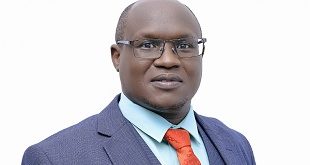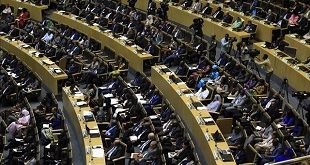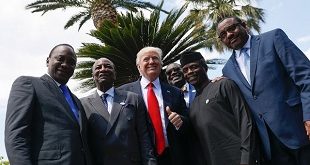
Paris, France | AFP |
Numerous presidents, especially in Africa and Latin America, have sought to amend their countries’ constitutions in an attempt to hang onto power.
Bolivia’s Evo Morales, who conceded on Wednesday he had lost a bid to seek a fourth term, is one of the few leaders to have been rebuffed via a referendum or popular pressure against the constitutional change:
Foiled: few precedents
In Zambia, Frederick Chiluba, who tried in vain in 2001 to change the constitution in order to get a third term, was forced to throw in the towel under popular pressure.
In Malawi, the parliament in 2002 blocked Bakili Muluzi from seeking a third mandate in 2004.
Crisis in Africa
In Burkina Faso, in October 2014, the announcement that long-serving president Blaise Compaore sought to extend his rule beyond 30 years brought hundreds of thousands of protesters onto the streets. Compaore was forced to stand down.
And Burundi has been mired in a bloody political crisis for the past 10 months after Pierre Nkurunziza won a highly controversial third term in July, 2015, following a constitutional row.
Extended terms in Africa
In 2015 two African heads of state succeeded in securing new terms in office after reforming their constitutions by referendum.
In Rwanda, the constitution was amended by 98.4 percent of the vote in a December referendum, allowing President Paul Kagame, in power since 1994, to potentially rule until 2034.

In October, voters in Congo voted by a landslide on changes to the constitution that would allow veteran ruler Denis Sassou Nguesso to contest elections next month.
As far back as 2002, in Togo a constitutional amendment paved the way for Gnassingbe Eyadema, in power since 1967, to seek another term in 2003.
Then, in July 2005 in Uganda, a constitutional reform scrapped restrictions on the number of presidential terms. Yoweri Museveni, in power since 1986, has just been re-elected to a fifth term.
In Chad, Idriss Deby Itno, has been in power since 1990, thanks to a constitutional revision in June 2005 which was adopted after a disputed referendum.
In Zimbabwe, a new constitution adopted in 2013 allowed President Robert Mugabe, in power since 1980, to stand in an election, which he won.
A Latin American wave
Peru’s leader Alberto Fujimori (1990-2000) in 1993 set in train a wave of constitutional reforms across the region, which had previously been attached to single-term presidencies to avoid the dictatorships which marked its history.
He was followed by Argentina’s president Carlos Menem (1989-1999) in 1995.
In Venezuela, which was ruled from 1999 to 2013 by the charismatic Hugo Chavez, a series of constitutional changes took place, culminating in that of February 2009, when voters authorised the president to hold an unlimited number of terms.
Nicaragua’s Daniel Ortega adopted a similar constitutional revision in 2011.
The former Soviet Union
In Belarus, in October 2004 in a referendum seen by the West as flouting democratic norms, Belarussians overwhelmingly voted to allow President Alexander Lukashenko to change the constitution to stay in power indefinitely.
In Armenia, in late 2015, a constitutional reform which the pro-Moscow government says was needed to strengthen democracy has been condemned by the opposition as a manoeuvre to keep President Serzh Sarkisian in power after his second term ends in 2018.
Finally, Tajikistan will hold a referendum in May that is expected to extend the grip of President Emomali Rakhmon and his family over the Central Asian country.
The Algerian case
Algeria’s parliament adopted a package of constitutional reforms earlier this month, that reinstate a two-term limit on the presidency — lifted in 2008 to allow Abdelaziz Bouteflika to run for a third time.
Under the reforms Bouteflika — whose public engagements have become rare since suffering a stroke in 2013 — will however, be allowed to finish his fourth term, which ends in 2019, and run for a fifth if he wishes.
 The Independent Uganda: You get the Truth we Pay the Price
The Independent Uganda: You get the Truth we Pay the Price


